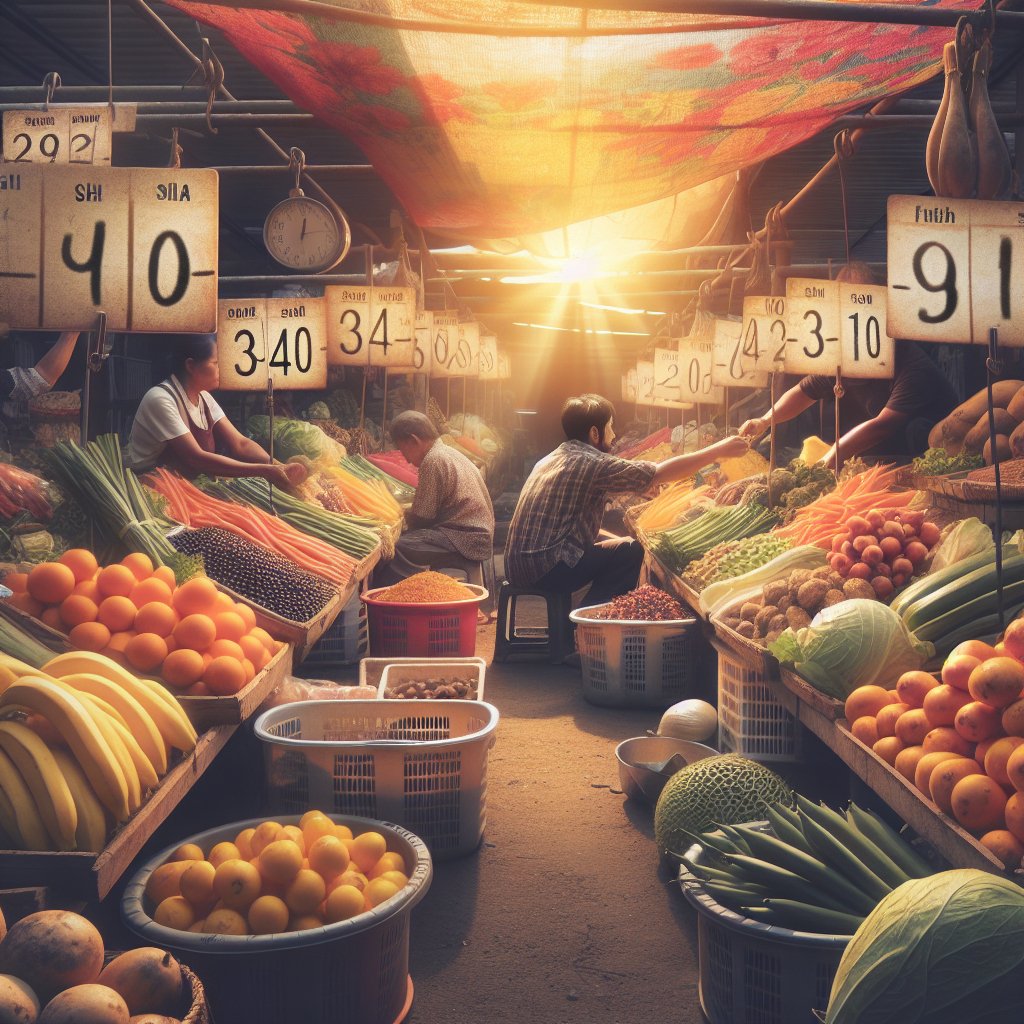The fluctuations in agricultural product prices on local markets are influenced by a myriad of factors, ranging from seasonal changes to global economic trends. Understanding these dynamics is crucial for farmers, consumers, and policymakers alike, as they navigate the complexities of supply and demand. This article delves into the various elements that contribute to price changes in local agricultural markets, examining both the short-term and long-term trends that shape the landscape of food production and distribution.
Factors Influencing Agricultural Prices
Several key factors play a significant role in determining the prices of agricultural products on local markets. These factors can be broadly categorized into supply-side and demand-side influences, each contributing to the overall pricing mechanism.
Supply-Side Influences
Supply-side factors refer to the conditions that affect the production and availability of agricultural products. These include:
- Weather Conditions: Weather plays a critical role in agriculture. Droughts, floods, and other extreme weather events can drastically reduce crop yields, leading to higher prices due to scarcity. Conversely, favorable weather can result in bumper harvests, driving prices down.
- Production Costs: The costs associated with farming, including labor, seeds, fertilizers, and equipment, directly impact the prices of agricultural products. When production costs rise, farmers may pass these costs onto consumers, resulting in higher prices.
- Technological Advancements: Innovations in agricultural technology can enhance productivity and efficiency. For instance, the adoption of precision farming techniques can lead to increased yields, which may lower prices in the long run.
- Pest and Disease Outbreaks: The emergence of pests and diseases can devastate crops, leading to reduced supply and increased prices. Farmers must invest in pest control measures, which can also contribute to higher costs.
- Government Policies: Subsidies, tariffs, and regulations can significantly influence agricultural production. For example, government support for certain crops can encourage overproduction, leading to lower prices.
Demand-Side Influences
On the demand side, various factors can affect consumer behavior and, consequently, the prices of agricultural products:
- Consumer Preferences: Changes in consumer preferences, such as a shift towards organic or locally sourced products, can impact demand. Increased demand for specific products can drive prices up, while a decline in interest can lead to lower prices.
- Population Growth: As the global population continues to grow, the demand for food increases. This heightened demand can lead to higher prices, especially in regions where agricultural production cannot keep pace with population growth.
- Economic Conditions: Economic factors, such as income levels and employment rates, influence consumer purchasing power. In times of economic prosperity, consumers may be willing to pay more for premium products, while economic downturns can lead to decreased demand for higher-priced items.
- Global Market Trends: Local agricultural prices are often affected by global market trends. For instance, if a major exporting country experiences a poor harvest, it can lead to increased prices worldwide, impacting local markets.
- Seasonality: Many agricultural products are seasonal, leading to fluctuations in supply and demand throughout the year. Prices for certain fruits and vegetables may rise during off-seasons when they are less available.
Long-Term Trends in Agricultural Pricing
While short-term fluctuations in agricultural prices are common, long-term trends can also be observed. These trends often reflect broader changes in society, technology, and the environment.
Climate Change and Its Impact
Climate change is increasingly recognized as a significant factor affecting agricultural production and pricing. As weather patterns become more unpredictable, farmers may face challenges in planning their crops and managing resources. This uncertainty can lead to increased volatility in prices, as supply may not meet demand during critical growing seasons.
Globalization of Agriculture
The globalization of agricultural markets has also transformed pricing dynamics. Local farmers are no longer competing solely with their neighbors but with producers from around the world. This increased competition can lead to lower prices for consumers but can also put pressure on local farmers to reduce costs, potentially impacting the quality of their products.
Technological Innovations
Advancements in technology are reshaping the agricultural landscape. From genetically modified organisms (GMOs) to automated farming equipment, these innovations can lead to increased efficiency and productivity. However, they can also create disparities in pricing, as larger farms may benefit more from these technologies than smaller, local producers.
Consumer Awareness and Sustainability
As consumers become more aware of the environmental and social impacts of their food choices, there is a growing demand for sustainable and ethically produced agricultural products. This shift in consumer behavior can lead to higher prices for organic and sustainably sourced items, while conventional products may see price declines as demand shifts.
Conclusion
The prices of agricultural products on local markets are influenced by a complex interplay of supply and demand factors, as well as long-term trends that reflect broader societal changes. Understanding these dynamics is essential for all stakeholders in the agricultural sector, from farmers to consumers. As we move forward, it will be crucial to monitor these trends and adapt to the evolving landscape of agricultural pricing, ensuring that both producers and consumers can thrive in a changing world.




